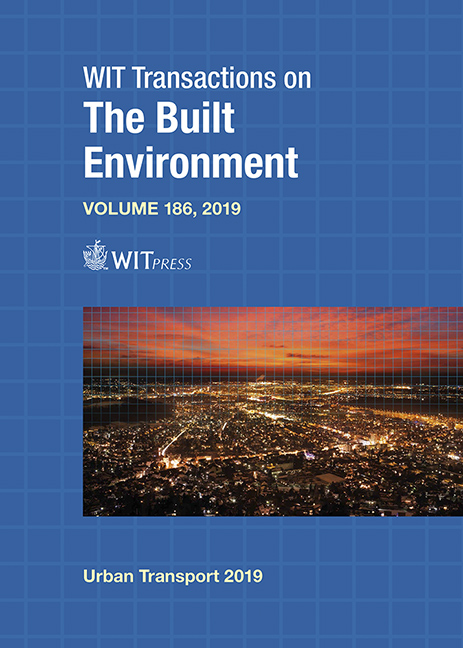ASSESSMENT OF LOCAL AIR QUALITY FOR DIFFERENT PENETRATION LEVELS OF CONNECTED AUTONOMOUS VEHICLES
Price
Free (open access)
Transaction
Volume
186
Pages
10
Page Range
153 - 162
Published
2019
Size
610 kb
Paper DOI
10.2495/UT190141
Copyright
WIT Press
Author(s)
LUÍS P. CORREIA, SANDRA RAFAEL, DIOGO LOPES, JORGE BANDEIRA, MARGARIDA C. COELHO, MÁRIO ANDRADE, CARLOS BORREGO, ANA I. MIRANDA
Abstract
Over the last decade, air quality patterns in Europe have improved due to the implementation of effective policies and actions to reduce atmospheric emissions. Despite of this effort, up to 30% of European citizens living in cities are still exposed to air pollution levels exceeding European air quality standards. Road transport is one of main emission sources, especially of harmful pollutants such as nitrogen oxide compounds (NOx). Technological developments in recent years have allowed for an increasing level of connected autonomous vehicles (CAVs), restricting human driving behaviour, which provides greater control and standardization of the driving style. The connection of these vehicles to several infrastructures and other road transports makes way to new routing methods that may include, for example, real-time traffic information, improve road safety, commute times and generate environmental benefits. In this context, the main goal of this work was to evaluate the impact of the increasing market penetration of CAVs in local road transport emissions and its influence on air quality. A main avenue of the Aveiro urban area (Portugal) was selected as case study and three scenarios were analysed: i) a baseline case, aiming to characterize the impacts of current car fleet on air quality; ii) one scenario with a 30% CAVs market penetration rate; and iii) one scenario with a 30% electric CAVs market penetration rate. The atmospheric emissions were calculated using the vehicle-specific power (VSP) model in an hourly basis for a typical workday. Cars following the parameters of CAVs were changed in order to reduce emissions of a mixed traffic flow composition. To perform the air quality simulations, the Computational Fluid Dynamic (CFD) model VADIS was applied and the NOx concentrations were analysed. Preliminary results indicate that an increased penetration rate of CAVs causes an increase in the NOx emission of the regular and CAVs fleet, and a slight depreciation of the air quality is noticed. However, when considering pure battery CAVs, the NOx concentration at a height of 1.5 m decreases significantly, averaging a 4% decrease for the whole computational domain.
Keywords
connected autonomous vehicles, air quality, urban areas, numerical modelling, pollutant dispersion





